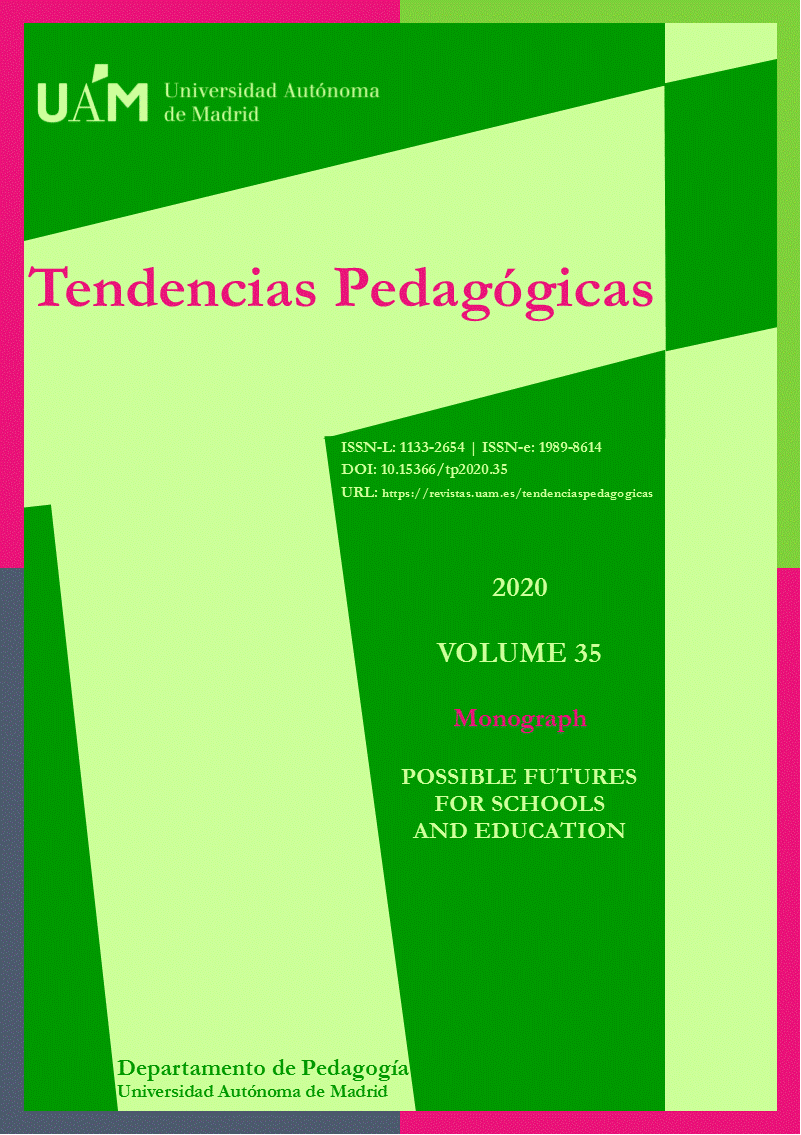Vision of themselves and others in adolescents from the development of memes based on the reading of 'Alice in Wonderland'
Keywords:
teenagers, high culture, culture, cultural information, fiction, technoculture
This work is licensed under a Creative Commons Attribution-NonCommercial 4.0 International License.
Abstract
The present study shows the perception that a group of teenagers between 12 and 13 years old have of themselves and of others. They live in the urban area of Mexico City and are in their first year of secondary education in a private middle-class school. The study has been carried out through 85 memes made after the reading of Alice in Wonderland. This is a quantitative research that shows who are the figures of authority and what are the fears that adolescents have today. It also shows the amount of words that young people need to convey a complete idea through a meme, and their concerns for the social problems they see or have been involved in. All this is discovered through a character or scene selected by the students after reading a universal literature classic assigned in Spanish class. This study seeks to show how it is possible to unite the so-called high culture with technoculture in the classroom to reflect cultural information about adolescents. This study is presented as a proposal for innovation, applicable to other educational levels and to other classic literature texts, where the main characteristic is the development of empathy for others.
Downloads
References
Asociación Mexicana de Internet (2017). Reporte: Hábitos de usuarios de internet México 2017. Recuperado de https://strategia20.com/reporte-habitos-de-usuarios-de-internet-mexico-2017.
Aunger, R. (2002). The Electric Meme. New York: Simon and Schuster.
Benita, D. (2008). Technoculture: The Key Concepts Debra Benita Shaw. Berg Publishers. United States.
Carvajal, G. (2005). Jóvenes, cultura escrita y tecnocultura. Madrid: Anagrama.
Dawkins, R. (1976). The Selfish Gene. New York: Oxford University Press.
Freixa, C. (2005). La habitación de los adolescentes en Papeles del CEIC, no.16 , CEIC (Centro de Estudios sobre la Identidad Colectiva), Universidad del País Vasco, http://www.ehu.eus/CEIC/papeles/16.pdf.
Gaete, V. (2015). Desarrollo psicosocial del adolescente. Revista chilena de pediatría, 86(6). doi: 10.1016/j.rchipe.2015.07.005
Gee, P. (2004). Lo que nos enseñan los videojuegos sobre el aprendizaje y el alfabetismo. Málaga: Ediciones Aljibe.
Grant, G. (1990). Memes: Introduction Principia Cybernetica. Recuperado de http://pespmc1.vub.ac.be/MEMIN.html.
Hernández, M. & Arciga, B. (2010). Tecnologías culturales, entornos comunicacionales y la reconfiguración del sujeto. Sintética. No. 34. Enero-junio. Tlaquepaque.
INEGI (2011). Censo de Población y Vivienda 2010. Resultados definitivos, México.
Jiménez, J. (2015). Alicia, 150 años en el País de las Maravillas. Corporación de Radio y Televisión Es-pañola. Recuperado de http://www.rtve.es/noticias/20150523/alicia150-anos-pais-maravillas/1148517.shtml
Knobel, M., & Lankshear, C. (2007). Online memes, affinities, and cultural production. En A new litera-cies sampler. New York: Peter Lang. Recuperado de http://liteacyandtech.pbworks.com/f/Text.pdf.
Lewis, C. (1865). Alicia en el País de las Maravillas. Edición 2017. Madrid: Vicens Vives.
Masiá, J. (2015). Animal vulnerable. Madrid: Trotta.
Manguel, A. (2015). Alicia cumple 150 años. Análisis, Recuperado de https://elpais.com/cultura/2015/05/23/actualidad/1432400906_608763.html.
OCDE (2016). PISA 2015 Assessment and Analytical Framework: Science, Reading, Mathematic and Financial Literacy. Paris: OECD Publishing. doi: 10.1787/9789264255425-en
Rushdie, S. (2018). Truth, Lies and Literature. The New Yorker. Recuperado de https://www.newyorker.com/culture/cultural-comment/truth-lies-and-literature.
Scruton, R. (2012). High culture is being corrupted by a culture of fakes. The Guardian. Recuperado de https://www.theguardian.com/commentisfree/2012/dec/19/high-culture-fake.
Tornos, A. (1965). Antropología filosófica. Barcelona: Salvat.
Twenge, J. M. (2017). iGen: Why today's super-connected kids are growing up less rebellious, more tolerant, less happy-- and completely unprepared for adulthood (and what this means for the rest of us). New York: Atria Books.
Wilkins, A. & Gibb, W. (1998). Toward Culturally Sensitive Theories of Culture Change. The Academy of Management Review, 13(4). doi: 10.5465/amr.1988.4307391

